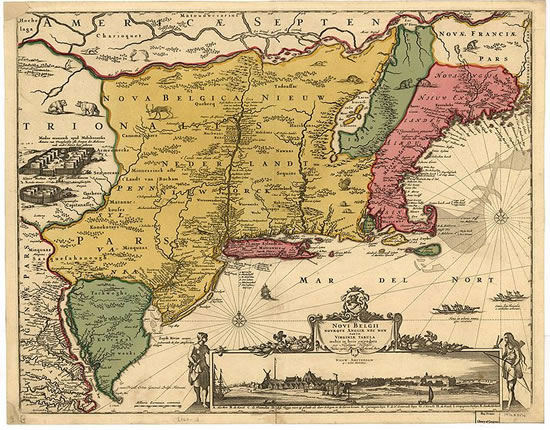New Netherland
New Jersey’s early colonial history is similar to New York’s. Like New York, the area was first colonized by Dutch settlers around 1613. The colony was called New Netherland, and included parts of modern-day New York and New Jersey. In 1660, the town of Bergen became the first established town in the New Jersey portion of New Netherland. Today, it is a large city named Jersey City.
Between the Hudson and Delaware Rivers
By 1664, the British had claimed the entire region and had driven the Dutch out. New Netherland was renamed New Jersey and New Amsterdam was renamed New York. Although King Charles originally gave the region to his brother, the Duke of York, eventually, he decided to divide the region and gave the land between the Hudson and Delaware River (New Jersey) to two of his friends, Sir George Carteret and Lord Berkeley of Stratton.
Religious Freedom for a Quitrent
Carteret and Berkeley began attracting people to the area by offering land and guaranteeing religious freedom. In return for the land, the settlers were supposed to pay a yearly tax called a quitrent. The quitrents proved hard to collect, which prompted the sale of the land to the Quakers in 1673. Upon the sale, New Jersey was divided in West Jersey and East Jersey. However, by 1702, the two divisions were united as the royal colony of New Jersey.
New Jersey Colony Articles and Activities
13 Colonies Navigation
Other 13 Colonies Articles


